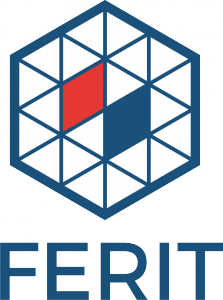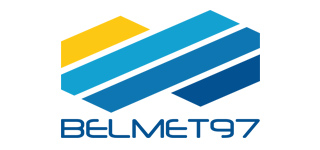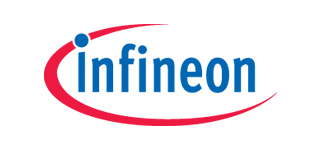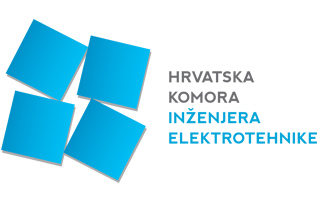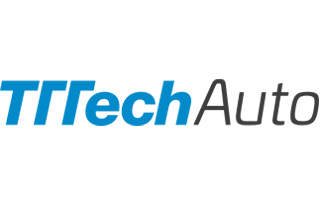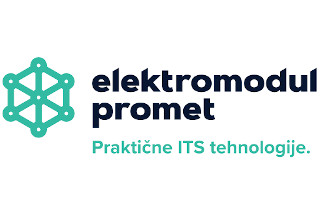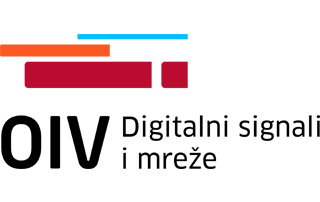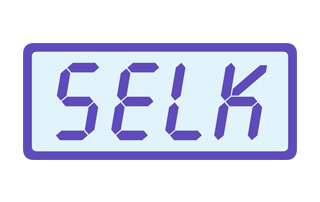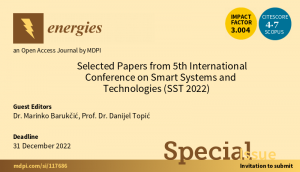
SST2022, October 19-21 2022, FERIT, Osijek
CONFERENCE CHAIRS
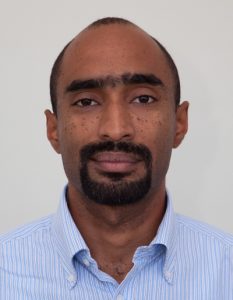
General Chair
Emmanuel Karlo Nyarko
Faculty of Electrical Engineering, Computer Science and Information Technology Osijek,
Josip Juraj Strossmayer University of Osijek,
Kneza Trpimira 2b, Osijek, Croatia
+385 31 495-403
e-mail:
karlo.nyarko@ferit.hr
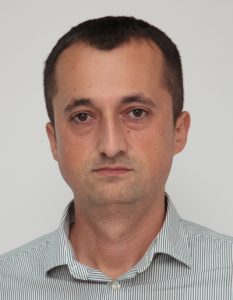
Program Chair
Tomislav Matić
Faculty of Electrical Engineering, Computer Science and Information Technology Osijek,
Josip Juraj Strossmayer University of Osijek,
Kneza Trpimira 2b, Osijek, Croatia
+385 31 224 602
e-mail:
tomislav.matic@ferit.hr
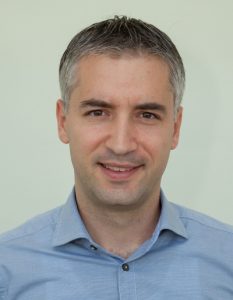
Program Chair
Mario Vranješ
Faculty of Electrical Engineering, Computer Science and Information Technology Osijek,
Josip Juraj Strossmayer University of Osijek,
Kneza Trpimira 2b, Osijek, Croatia
+385 31 224-670
e-mail:
mario.vranjes@ferit.hr
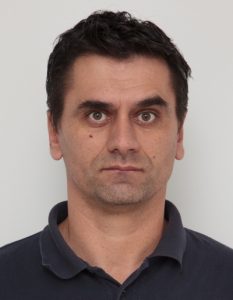
Registration Chair
Marinko Barukčić
Faculty of Electrical Engineering, Computer Science and Information Technology Osijek,
Josip Juraj Strossmayer University of Osijek,
Kneza Trpimira 2b, Osijek, Croatia
+385 31 224-685
e-mail:
marinko.barukcic@ferit.hr
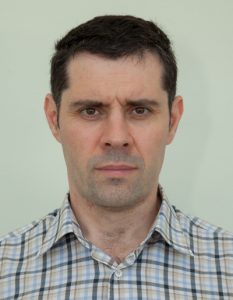
Publication Chair
Robert Cupec
Faculty of Electrical Engineering, Computer Science and Information Technology Osijek,
Josip Juraj Strossmayer University of Osijek,
Kneza Trpimira 2b, Osijek, Croatia
+385 31 495 427
e-mail:
robert.cupec@ferit.hr
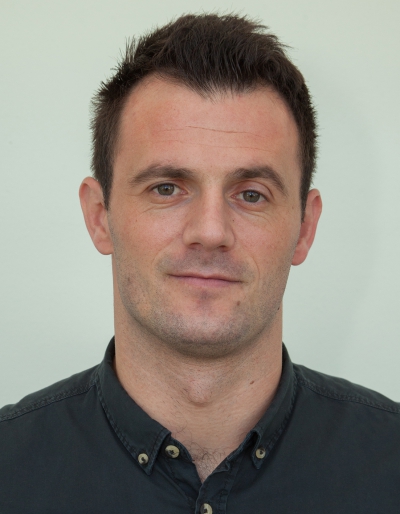
Publicity/Web Chair
Danijel Topić
Faculty of Electrical Engineering, Computer Science and Information Technology Osijek,
Josip Juraj Strossmayer University of Osijek,
Kneza Trpimira 2b, Osijek, Croatia
+385 31 224 614
e-mail:
danijel.topic@ferit.hr
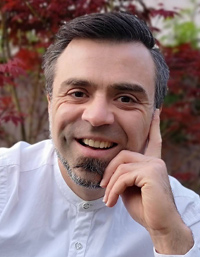
Publicity/Web Chair
Josip Balen
Faculty of Electrical Engineering, Computer Science and Information Technology Osijek,
Josip Juraj Strossmayer University of Osijek,
Kneza Trpimira 2b, Osijek, Croatia
+385 31 224 759
e-mail:
josip.balen@ferit.hr
STEERING COMMITTEE
Nina Begičević-Ređep
University of Zagreb, Croatia
Leo Budin
Croatian Academy of Sciences and Arts;
University of Zagreb, Croatia
Matjaž Colnarič
University of Maribor, Slovenia
Bojan Čukić
University of North Carolina at Charlotte, USA
Gordan Gledec
University of Zagreb, Croatia
Francisco Gonzalez-Longatt
Faculty of Technology, University of South-Eastern Norway, Norway
Sven Gotovac
University of Split, Croatia
Mislav Grgić
University of Zagreb, Croatia
Norbert Herencsar
Brno University of Technology, Czech Republic
Željko Hocenski
J.J. Strossmayer University of Osijek, Croatia
Ignac Lovrek
University of Zagreb, Croatia
Francisco Martínez Álvarez
Universidad Pablo de Olavide, Seville, Spain
Ngoc Thanh Nguyen
Wroclaw University of Technology, Poland
Srete Nikolovski
J.J. Strossmayer University of Osijek, Croatia
Milos Oravec
Slovak University of Technology, Slovakia
Hrvoje Pandžić
University of Zagreb, Croatia
Davor Pavuna
École Polytechnique Fédérale de Lausanne (EPFL), Switzerland
Nedjeljko Perić
University of Zagreb, Croatia
Ivan Petrović
University of Zagreb, Croatia
Sasikumar Punnekkat
Mälardalen University, Sweden
Ivan Samardžić
University of Slavonski Brod, Croatia
Andrea M. Tonello
Alpen-Adria-Universität Klagenfurt, Austria
Mladen Vouk
North Carolina State University, USA
Drago Žagar
J.J. Strossmayer University of Osijek, Croatia
PROGRAM COMMITTEE
Danilo Babin
Ghent University, Belgium
Mato Baotić
University of Zagreb, Croatia
Adrijan Baric
University of Zagreb, Croatia
Ertuğrul Başar
Koç University, Turkey
Tin Benšić
J.J. Strossmayer University of Osijek, Croatia
Vlatko Cingoski
Goce Delčev University of Štip, North Macedonia
Zlatko Čović
Subotica Tech – College of Applied Sciences, Serbia
Mahdiyeh Eslami
Islamic Azad University – Kerman Branch, Iran
Damir Filko
J.J. Strossmayer University of Osijek, Croatia
Irena Galić
J.J. Strossmayer University of Osijek, Croatia
Sonja Grgic
University of Zagreb, Croatia
Francesco Grimaccia
Politecnico di Milano, Italy
Andrej Gubina
University of Ljubljana, Slovenia
Daniel Hofman
University of Zagreb, Croatia
Georges Kaddoum
University of Quebec, Canada
Tilda Karkour Akiki
Holy Spirit University of Kaslik, Lebanon
Tomislav Keser
J.J. Strossmayer University of Osijek, Croatia
Tatjana Konjić
University of Sarajevo, Bosnia and Herzegovina
Dražan Kozak
University of Slavonski Brod, Croatia
Dieter Kraus
Hochschule Bremen City University of Applied Sciences
Pawan Kumar
Thapar Institute of Engineering & Technology, India
Ramya Kuppusamy
Sri Sairam College of Engineering, India
Mario Kusek
University of Zagreb, Croatia
Edin Lakic
University of Ljubljana, Slovenia
Ivan Magdalenić
University of Zagreb, Croatia
Vlado Majstorović
University of Mostar, Bosnia and Herzegovina
Ivan Markovic
University of Zagreb, Croatia
Goran Martinovic
J.J. Strossmayer University of Osijek, Croatia
Tomi Medved
University of Ljubljana, Slovenia
Henry Muccini
University of L’Aquila, Italy
Gregor Papa
Jožef Stefan Institute, Slovenia
Marcin Paprzycki
Systems Research Institute of the Polish Academy of Sciences, Poland
Petra Pejić
J.J. Strossmayer University of Osijek, Croatia
Rene Prenc
University of Rijeka, Croatia
Kiran Ravulakolla
Woxsen University, India
Snježana Rimac-Drlje
J.J. Strossmayer University of Osijek, Croatia
Slavko Rupčić
J.J. Strossmayer University of Osijek, Croatia
Vasilija Sarac
Goce Delčev University of Štip, North Macedonia
Marija Seder
University of Zagreb, Croatia
Sebastijan Seme
University of Maribor, Slovenia
Dejan Skvorc
University of Zagreb, Faculty of Electrical Engineering and Computing
Damir Sljivac
J.J. Strossmayer University of Osijek, Croatia
Vlado Sruk
University of Zagreb, Croatia
Marinko Stojkov
University of Slavonski Brod, Croatia
Yuvaraja Teekaraman
University of Sheffield, United Kingdom
Domagoj Tolic
Rochester Institute of Technology, Croatia
Massimo Villari
University of Messina, Italy
Tomislav Volaric
University of Mostar, Bosnia and Herzegovina
Denis Vranješ
J.J. Strossmayer University of Osijek, Croatia
Mario Vrazic
University of Zagreb, Croatia
Ivan Yatchev
Technical University of Sofia, Bulgaria
Bruno Zorić
J.J. Strossmayer University of Osijek, Croatia
ORGANIZING COMMITTEE
Davor Begić
J.J. Strossmayer University of Osijek, Croatia
Domagoj Bilandžija
J.J. Strossmayer University of Osijek, Croatia
Dragana Božić Lenard
J.J. Strossmayer University of Osijek, Croatia
Viktorija Dozan
J.J. Strossmayer University of Osijek, Croatia
Mirela Glavaš
J.J. Strossmayer University of Osijek, Croatia
Mirta Hanzer
J.J. Strossmayer University of Osijek, Croatia
Željko Jeršek
J.J. Strossmayer University of Osijek, Croatia
Ružica Kljajić
J.J. Strossmayer University of Osijek, Croatia
Zorislav Kraus
J.J. Strossmayer University of Osijek, Croatia
Iva Perić Kuzmanović
J.J. Strossmayer University of Osijek, Croatia
Jasminka Majdandžić
J.J. Strossmayer University of Osijek, Croatia
Marina Maslać Popadić
J.J. Strossmayer University of Osijek, Croatia
Mario Miloloža
J.J. Strossmayer University of Osijek, Croatia
Marina Peko
J.J. Strossmayer University of Osijek, Croatia
Maristela Primorac
J.J. Strossmayer University of Osijek, Croatia
Krešimir Romić
J.J. Strossmayer University of Osijek, Croatia
Marko Šarić
J.J. Strossmayer University of Osijek, Croatia
Marijana Širić
J.J. Strossmayer University of Osijek, Croatia
Robert Šojo
J.J. Strossmayer University of Osijek, Croatia
Ana Šokčević
J.J. Strossmayer University of Osijek, Croatia
Tihana Vajnand
J.J. Strossmayer University of Osijek, Croatia
Davor Vrandečić
J.J. Strossmayer University of Osijek, Croatia
Stephen Ward
J.J. Strossmayer University of Osijek, Croatia
IMPORTANT DATES
CONFERENCE
Extended deadline (FINAL)
10th June, 2022
Conference paper submission deadline
Extended deadline
30th June, 2022
Notification of conference paper acceptance
Extended deadline
15th July 2022
Final conference paper submission
14th Sept., 2022
Conference registration
SPECIAL SESSION AND WORKSHOP PROPOSALS
15th March, 2022
Workshop and special session proposal submission
31st March, 2022
Workshop and special session proposal acceptance
Extended deadline
20th June 2022
Workshop/special session paper submission
Extended deadline
30th June 2022
Notification of workshop/special session paper acceptance
Extended deadline
15th July 2022
Final paper submission
14th September, 2022
Workshop/special session registration
TOPICS
Topics for submission include but are not limited to:
- Affective Computing
- Agriculture Automation
- Applied Electromagnetics in Smart Systems
- Artificial Intelligence
- Big Data and Smart Systems
- Biometrics and Smart Systems
- Cloud Computing
- Control Systems and Robotics
- Cyber-Physical Systems
- Dependable Computer Systems
- Embedded Computer Systems
- Green Communication
- Green Computing
- High Performance Computing
- Image and Video Processing
- Intelligent Power Systems and Environments
- Intelligent Transportation Systems
- Internet of Things
- Microgrid
- Mobile and Wireless Networks
- Security and Privacy
- Smart Antennas
- Smart Grid
- Smart Health
- Smart Houses and Cities
- Smart Power Systems
- Smart Systems and Technologies in Education
- Smart Systems for Green Energy
- Smart Systems in Business Information Systems
- Software Engineering for Smart Systems
SST 2022 – CONFERENCE PROGRAM
Conference venue: Hotel Osijek, Šamačka ul. 4, 31000, Osijek, Croatia
Wednesday, 19 October 2022
Registration
09:30 – 10:00
Opening ceremony
(Room A – Lipa)
10:00 – 11:00
Chairs: Emmanuel Karlo Nyarko, Tomislav Matić, Mario Vranješ, Marinko Barukčić, Robert Cupec, Danijel Topić, Josip Balen
Plenary Speaker
(Room A – Lipa)
11:00 – 12:00
Julius Georgiou
Smart Systems for Improved Quality of Life
Chair: Emmanuel Karlo Nyarko
Coffee Break
12:00 – 12:30
Keynote Lecture
(Room A – Lipa)
12:30 – 13:30
Hrvoje Pandžić
Do we need distribution-level markets?
Chair: Danijel Topić
Lunch
13:30 – 14:30
Sustainability and Power Generation
(Room B – Kesten )
14:30 – 16:00
Chairs: Tomislav Capuder, Zvonimir Klaić
*Amirhossein Khazali, Roozbeh Torkzadeh, Harold R. Chamorro, Peter Makolo, Ramon Zamora and Vijay K. Sood
Power/Hydrogen Optimal Stochastic Scheduling Considering Frequency Regulation Markets
Ružica Kljajić, Zorislav Kraus, Marko Tuđan and Predrag Marić
Comparison of cost-effectivnes of fixed and two-axis tracking PV system in market conditions
Dina Jukić, Hrvoje Glavaš, Jana Dukić and Lukrecia Vulić
Ramifications of the greenhouse effect: a closed vehicle example
Klemen Sredenšek, Miralem Hadžiselimović, Bojan Štumberger and Sebastijan Seme
Smart monitoring system for the photovoltaic tracking systems: A case study
*Abid Hasan Zim, Mohammad Zeyad, S.M. Masum Ahmed and Eftakhar Hossain
Short-term Weather Forecasting for Wind Energy Generation using A Deep Learning Technique
Lucija Župan, Zvonimir Klaić, Ana Androjić and Krešimir Fekete
Prosumer Management Strategies in Residential House
*Online
Special Session: X-FLEX
(Room A – Lipa)
14:30 – 16:00
Organizers: Bojan Stojanovič, Mislav Kirac, Edin Lakić, Tomi Medved
Poster session (sponsors)
(Coffee Break Room)
16:00 – 16:45
Coffee Break
16:00 – 16:45
Smart Power Systems
(Room A – Lipa)
16:45 – 18:15
Chairs: Goran Knežević, Krešimir Fekete
Davorin Burgund and Srete Nikolovski
Comparison of Functionality of Non-Conventional Instrument Transformers and Conventional Current Transformers in Distribution Networks
*Harold Chamorro
Power Systems Coherency Representation and Identification as Particles
*Harold R. Chamorro
Characterization of Pole-Type Distribution Transformers in Honduras Distribution Network – Part I
Damir Jakus, Joško Novaković, Josip Vasilj, Nikola Grbavac and Danijel Jolevski
Active Distribution Network Voltage Profile Optimization Using Mixed Integer Programming
Bruno Malbasic and Hrvoje Pandzic
Requirements, Challenges and Experiences of Practical Demand Response in Households
Vitali Korzhun and Andrea M. Tonello
Channel Tracking for Future Powerline-based Full-Duplex Smart Grid Communication Networks
*Online
Machine Learning Applications 1
(Room B – Kesten)
16:45 – 18:15
Chairs: Damir Filko, Petra Pejić
Daniel Vasić, Vlado Grubišić and Tomislav Volarić
Neural Model for Soil Moisture Level Determination Based on Weather Station Data Smart Campus Use Case
Jakov Topić, Branimir Škugor, Joško Deur, Vladimir Ivanović and H. Eric Tseng
Neural Network-based Prediction of Pedestrian Crossing Behavior at Uncontrolled Crosswalks
Lea Pavelko, Branimir Škugor, Joško Deur, Vladimir Ivanovic and H. Eric Tseng
Modification and Experimental Validation of a Logistic Regression Vehicle-Pedestrian Model
Luka Jelic, Jurica Kenda, Anita Banjac, Filip Rukavina and Vinko Lesic
Identification of Window Openness in Smart Buildings by Random Forest Algorithm
Jakov Topić, Branimir Škugor and Joško Deur
Static Stochastic Model-Based Prediction of City Bus Velocity
Bruno Pavlinic and Domagoj Tolic
Predicting Diffuse Horizontal Radiation with Neural Networks
Cocktail Dinner (Hotel Osijek)
20:00 – 23:00
Thursday, 20 October 2022
Registration
8:00 – 8:30
Software and Systems Engineering
(Room A – Lipa)
8:30 – 9:30
Chairs: Bruno Zorić, Marinko Barukčić
*Michal Kvet
Identifying, managing, and accessing undefined tuple states in relational databases
Zdravko Krpić, Luka Loina and Tomislav Galba
Evaluating performance of SBC Clusters for HPC Workloads
Jonathan Price, Richard Dill, Stephen Dunlap and Mason Rice
JTAG Data Acquisition for Cyber-Physical System Security
Drazen Bajer, Mario Dudjak and Bruno Zorić
Bio-inspired wrapper-based feature selection: does the choice of metric matter?
*Online
Sensors and IoT Systems
(Room B – Kesten)
8:30 – 9:30
Chairs: Ivan Vidović, Tomislav Matić (mlađi)
*Jannatul Feardous, Md. Sadik Tasrif Anubhove, Eftakhar Hossain, S.M. Masum Ahmed and Mohammad Zeyad
Evaluation of Modern Smart Cities in South Asian Countries: Advanced Applications of Internet of Things (IoT)
Kristijan Čvek, Marija Mostarac and Kruno Miličević
Impact of different noise distributions in the application of Kalman filter in sensor fusion
Josip Zidar, Ivan Aleksi, Tomislav Matić and Drago Žagar
Smart Sticker Roll and Pitch Angles Estimation for Shock Analysis in the Supply Chain
Mihael Jakšić, Filip Vrbanc and Vinko Lešić
Zone Climate Control Living Lab with Wireless IoT Devices
*Online
Machine Learning Applications 2
(Room B – Kesten)
9:30 – 11:00
Chairs: Ratko Grbić, Emmanuel Karlo Nyarko
Časlav Livada and David Hodak
Advanced mechanisms of perception in the digital hide and seek game based on deep learning
Luka Loina
Speaker Identification Using Small Artificial Neural Network on Small Dataset
Grigor Škarić, Filip Turčinović and Marko Bosiljevac
Ground-based SAR System with Deep Learning Localization and Detection of Vital Signs
Mia Baržić, Naomi-Frida Munitić, Filip Bronić, Luka Jelić and Vinko Lešić
Forecasting sales in retail with XGBoost and iterated multi-step ahead method
Alen Ugarković and Dijana Oreški
Supervised and unsupervised machine learning approaches on class imbalanced data
Workshop – Smart technologies for sustainable agriculture (Part 1)
(Room A – Lipa)
9:30 – 11:00
Josip Spišić, Ana Pejković, Matko Zrnić, Višnja Križanović, Krešimir Grgić and Drago Žagar
LoRaWAN parameters optimization for efficient communication
Krunoslav Tržec, Mario Kušek and Ivana Podnar Žarko
Building an Interoperable IoT Ecosystem for Data-Driven Agriculture
Dario Stuhne, Ivo Vatavuk, Ivan Hrabar, Goran Vasiljević and Zdenko Kovačić
Automated Suckering of Vines with a Mobile Robot and a Torque-controlled Suckering Tool
Krešimir Grgić, Luka Balić, Višnja Križanović and Drago Žagar
An example of indoor positioning possibility using WiFi network and mobile phone
Dora Krekovic and Ivana Podnar Žarko
Prediction of Microclimate Parameters for Application in Precision Agriculture
Coffee Break
11:00 – 11:30
EVs and Energy Storage
(Room B – Kesten)
11:30 – 13:00
Chairs: Danijel Topić, Tin Benšić
Marko Rusan, Kresimir Fekete, Kristijan Cvek and Zvonimir Klaić
Harmonic Impact of EV Charging Station on Prosumer-Rich Distribution Feeders
Josip Vasilj, Damir Jakus, Mateo Marusic and Mate Relja
Robust model for EV driven grid impact estimation
Matej Cenký, Jozef Bendík, Žaneta Eleschová, Anton Beláň, Boris Cintula and Peter Janiga
Stochastic Analysis of Battery Storage Systems Integration to the Real Distribution Network with Variable Penetration Levels of PV Systems
Pavel Vedel and Lukas Hubka
Linear Regression Model of Li-Ion Battery Capacity Losing Rate Based on Equivalent Circuit Model Parameters and Operation Modes
Karlo Kvaternik, Danijel Pavković, Yuliia Kozhushko and Mihael Cipek
Extended Kalman Filter Design for State-of-Charge Estimation of a Lithium-Titanate Battery Cell
Nemanja Mišljenović, Goran Knežević, Matej Žnidarec and Marina Dubravac
Optimal utilization of the electric vehicle in a various market approach
Workshop – Smart technologies for sustainable agriculture (Part 2)
(Room A – Lipa)
11:30 – 13:00
Domagoj Šimić, Vlatko Galić, Josip Spišić, Maja Mazur, Tatjana Ledenčan and Zvonimir Zdunić
Field-Based High-Throughput Phenotyping Using Newly Developed Proximal Sensor Device
Monika Zovko
Sensory Monitoring and Modeling of Temporal and Spatial Phenomena in Agroecosystems
Invited talk
Andrijana Rebekić
Digitalization in Agriculture – What Competencies Agronomist Needs
Invited talk
Vlatko Galić
Digitizing the In-Field Agro-Ecological Reality – Goals, Achievements, Pitfalls
Invited talk
Discussion / Round table
Lunch
13:00 – 14:00
Keynote Lecture
(Room A – Lipa)
14:00 – 15:00
Chair: Marijan Herceg
*Georges Kaddoum
IIoT-Empowering Smart Grid Networks: Potential Solutions and Challenges
*Online
City Tour
16:00 – 18:00
(Departure in front of Hotel Osijek at 16:00)
Gala Dinner and Awards Ceremony (Hotel Lug)
18:15 – 23:00
(Departure in front of Hotel Osijek at 18:15)
Friday, 21 October 2022
Invited Lecture
(Room A – Lipa)
8:30 – 09:30
Chair: Damir Šljivac
Boris Dumnić
An innovative approach to a more sustainable and reliable energy society demonstrated by Renewable Energy Sources for smart sustainable health Centers, University Education and other public buildings
Coffee Break
09:30 – 10:00
Electronics and Control Systems
(Room B – Kesten)
10:00 – 11:30
Chairs: Davor Vinko, Tomislav Matić (dekan)
Nardi Verbanac, Neven Bulić, Gerald Jungmayr and Edmund Marth
Nonlinear Position Control of a Magnetic-Geared Servo Drive With Unknown Load
Petra Miletić, Neven Bulić, Nardi Verbanac and Stefano Barbanti
Sensorless Vector Control for Induction Machine Based on the α Approximation
Marko Koričić, Marin Furčić, Monika Jurenić, Dorian Emanović, Fran Jakovac, Josip Žilak, Filip Bogdanović and Tomislav Suligoj
Investigation of the Electrical Performance of Voltage-Controlled-Oscillators in HCBT BiCMOS Technology
Davor Vinko, Domagoj Bilandžija and Branimir Barišić Jaman
Dimensioning RX Coil in Wireless Power Transfer System
Andrej Brandis, Denis Pelin, Zvonimir Šimić and Ivan Vidošić
ATmega2560 MCU Space Vector Modulation Implementation on Three-phase Inverter and Validation via Typhoon HIL 402
Tomislav Barić, Hrvoje Glavaš and Željko Hederić
Handheld UHF quad antennas with reinforced mechanical characteristics
(Room A – Lipa)
10:00 – 12:00
Tomislav Capuder
Introduction to the smart distribution networks project
Kristina Mileta
Smart devices in smart networks: Metering in Croatian LV networks
Tomislav Antić, Terezija Matijašević
Modelling challenges in LV networks
Danijel Dobutović, Sven Breyer
Loss analysis in the pilot location Vinkovci
TBD, 7IT
DINGO – a simple visualization of complex data
Goran Jurišić, Tomislav Capuder
Closing remarks and new ideas for the future
Coffee Break
11:30 – 12:15
Image and Video Processing
(Room B – Kesten)
12:15 – 13:30
Chairs: Mario Vranješ, Denis Vranješ
Jakov Benjak, Daniel Hofman and Martina Perleta
Spatial and Temporal Complexity Analysis of 4K Drone Footage
Jelena Vuletić, Marsela Polic and Matko Orsag
Procedural generation of synthetic dataset for robotic applications in sweet pepper cultivation
Petar Mostarac, Stipan Ljudevit Drmić, Jasna Janković, Željko Ilić, Gordan Šišul and Alan Šala
Calibration and definition of a system for automated ship length measurement
Tomislav Rekić, Ian Beissmann, Filip Novoselnik and Aldin Ćebo
Visual quality inspection of rotors and stators
Filip Zorić, Goran Vasiljević, Matko Orsag and Zdenko Kovačić
Towards intuitive HMI for UAV control
Closing ceremony
(Room A – Lipa)
13:30 – 14:00
Coffee and Light Lunch
14:00 – 15:00
WORKSHOP
Smart technologies for sustainable agriculture
Workshop Chairs
- Drago Žagar, University of J. J. Strossmayer in Osijek, Faculty of Electrical Engineering, Computing and Information Technologies, Osijek, Croatia
- Ivana Podnar Žarko, University of Zagreb, Faculty of Electrical Engineering and Computing, Zagreb, Croatia
- Domagoj Šimić, Agricultural Institute Osijek, Croatia
Overview
Application of modern information and communication technologies in the agricultural sector can significantly increase the efficiency of agricultural land use, which will result in increased quantity and quality of agricultural yields and in reduced negative impact of climate change. The aim of the workshop is to present the latest research and technologies in the field of smart agriculture that are applied globally, to describe the current situation at the local and national levels, to detect important problems and challenges in the field and to propose adequate solutions. Furthermore, the main results of the scientific research project “IoT-field: An Ecosystem of Networked Devices and Services for IoT Solutions Applied in Agriculture” will be presented.
Topics
Authors are invited to submit manuscripts presenting original, unpublished research on the use of ICT solutions for sustainable agriculture. Topics of interest include, but are not limited to the following:
- Sensors for smart agriculture and agri-environmental monitoring
- LPWAN technologies and novel protocols for smart agriculture
- Wireless sensor networks and IoT platforms for smart agriculture
- Precision agriculture and data-driven solutions to increase crop yields
- Robotics and AI-based solutions for smart agriculture
- Smart farming for agroecology to reduce negative impacts of agriculture on the environment
Paper Submission and Publication
Prospective authors are invited to submit novel, previously unpublished full papers, addressing the topics of interest, for consideration for the workshop. All submitted papers will go through the regular peer-review process. Submission of a paper implies that, if the paper is accepted, at least one of the authors must register and attend the conference to present the work according to the general rules of the conference. Accepted and presented papers will be published in the conference proceedings and submitted to IEEE Xplore.
Guidelines for formatting, style, and submission of papers can be found on the SST2022 main page.
Important dates
- May 31, 2022: Full Papers due
- June 25, 2022: Notification of Acceptance/Rejection
- July 15, 2022: Final, Camera Ready Papers, Due


The workshop is organized by the research project “IoT-field: An Ecosystem of Networked Devices and Services for IoT Solutions Applied in Agriculture” with support from European Regional Development Fund (ERDF) and the three participating research institutions from Croatia: FER Zagreb, FERIT Osijek and Agricultural Institute Osijek.
Date and time: Thursday, 20 October 2022, 9:30
Venue: Hotel Osijek, Šamačka 4, 31000 Osijek, Croatia
Workshop – Smart technologies for sustainable agriculture (Part 1)
(Room A – Lipa)
9:30 – 11:00
Josip Spišić, Ana Pejković, Matko Zrnić, Višnja Križanović, Krešimir Grgić and Drago Žagar
LoRaWAN parameters optimization for efficient communication
Krunoslav Tržec, Mario Kušek and Ivana Podnar Žarko
Building an Interoperable IoT Ecosystem for Data-Driven Agriculture
Dario Stuhne, Ivo Vatavuk, Ivan Hrabar, Goran Vasiljević and Zdenko Kovačić
Automated Suckering of Vines with a Mobile Robot and a Torque-controlled Suckering Tool
Krešimir Grgić, Luka Balić, Višnja Križanović and Drago Žagar
An example of indoor positioning possibility using WiFi network and mobile phone
Dora Krekovic and Ivana Podnar Žarko
Prediction of Microclimate Parameters for Application in Precision Agriculture
Workshop – Smart technologies for sustainable agriculture (Part 2)
(Room A – Lipa)
11:30 – 13:00
Domagoj Šimić, Vlatko Galić, Josip Spišić, Maja Mazur, Tatjana Ledenčan and Zvonimir Zdunić
Field-Based High-Throughput Phenotyping Using Newly Developed Proximal Sensor Device
Monika Zovko
Sensory Monitoring and Modeling of Temporal and Spatial Phenomena in Agroecosystems
Invited talk
Andrijana Rebekić
Digitalization in Agriculture – What Competencies Agronomist Needs
Invited talk
Vlatko Galić
Digitizing the In-Field Agro-Ecological Reality – Goals, Achievements, Pitfalls
Invited talk
Discussion / Round table
SPECIAL SESSIONS
Special Session:
Implementation of models and innovative solutions in the operation of smart distribution networks
Implementation of models and innovative solutions in the operation of smart distribution networks
Organizer:
Tomislav Capuder, University of Zagreb Faculty of electrical engineering and computing
Short description:
Traditional power systems were characterized by passive end-users, oriented mostly on power delivery. Also, power system operators planned the generation of large power plants so that it matches electricity demand. In recent years, the paradigm of planning and operation of power systems, and especially distribution systems have significantly changed.
The green energy transition and different climate packages emphasize the need for the reduction of greenhouse gas emissions and in general, the negative impact of power systems on the environment. In order to do so, the integration of renewable energy sources and other low carbon (LC) units becomes a vital part of the planning and operation of distribution networks. A recent increase in electricity prices and other energy sources, e.g., gas and oil, often used in heating and transport, combined with the decrease in prices of LC technologies, caused by technological development, encourages end-users to invest in photovoltaics (PVs), heat pumps, electric vehicles (EVs) and other LC units. Therefore, the share LC units in distribution networks, i.e., distributed energy resources, continuously grows.
Despite their positive environmental and financial impact, they create numerous technical issues for Distribution System Operators. Increased PV production leads to overvoltage and reverse power flows, while uncontrollable charging of EVs can cause network congestions and undervoltage problems. Integration of LC units is also related to different power quality problems. Since most of them are power electronics-interfaced to a network, combined with non-linear loads in a network, they increase the harmonic pollution in distribution networks. Even though end-users can be single-phase, or three-phase connected to a network, most of their devices are single-phase connected. Additionally, based on their maximum power, LC units can be single-phase connected. Single-phase connection only contributes to the increase of voltage and current unbalance. Deterioration of power quality leads to increased technical, and consequentially financial losses, a decrease in the equipment’s performance and their expected lifetime.
To enable further integration of LC units and to ease the operation of smart distribution networks, DSOs require specialized tools that will enable the assessment of LC units’ impact but also propose solutions that will help in resolving technical challenges. Recently, these solutions become more oriented toward the exploitation of the end-users potential. Distribution and especially low voltage (LV) networks are often characterized by low observability. Network topology and other data required for the analyses and simulations are often unknown, which only hinders the assessment and operation processes. Recently, the number of smart meters and related communication infrastructure installed in distribution networks has grown and
has increased the observability of distribution networks. A high share of smart meters is a prerequisite for the total transition towards smart, active distribution networks. Also, it is needed for the exploitation of the end-users flexibility in the mitigation of different voltage and current issues.
The databases with the network data are often large and they contain a lot of data that cannot be used in the initial form. Before using this data in any of the analyses, it requires preprocessing and editing, so all the errors and unnecessary information are removed. Network topology and other network data are analyzed and edited using tools based on Geographic Information Systems (GIS). Since the network data besides the technical attribute often contains geographical, locational attributes, GIS-based tools are suitable for running the topological queries and other geospatial operations needed for editing the network data, which then can be used in power flow, harmonic, and other relevant analyses. The data valid for the end-users, e.g., consumption or voltages, often cannot be used in the primary form due to outliers or missing values. Also, this data is large and complex and requires the use of tools that are suitable to work with such datasets. Recently, machine learning (ML) algorithms have been widely used in the operation of smart distribution networks. These algorithms show great capability in working with large and complex datasets but require precise data. The data without any missing or outlier values and other potential errors are ensured by analysis made in the preprocessing. Despite the increased number of installed smart meters, their full potential remains unexploited since they are used only for collecting the basic billing and processing data such as end-users active consumption and phase voltages. Since the analyses require more detailed data, ML-based algorithms are used for different purposes, e.g., distribution of the consumption among the phases. ML algorithms can be used in forecasting the consumption of end-users and a load of substations, forecasting network losses, or the RESs production.
End-users are becoming the central figure in the green energy transition. Their flexibility potential is more often used in enabling the integration of LC units and the mitigation of technical challenges in the operation of smart distribution networks. The operation of smart distribution networks also requires the development of the tools and implementation of the advanced models that will help in all necessary analyses and in solving voltage, current, power quality, and other problems related to the integration of LC units. ML, optimization, and algorithms based on the other systems such as GIS are widely used in the aspect of the network’s operation and their functionalities are used to overcome all data-related issues and consequentially to exploit the potential of end-users and maximize the DER’s hosting capacity.
The special session will feature a series of presentations as follows:
1. Tomislav Capuder, UNIZGFER: “Introduction to the smart distribution networks project” (duration: 10 minutes)
2. Kristina Mileta, HELB: “Smart devices in smart networks: Metering in Croatian LV networks” (duration: 20 minutes)
3. Tomislav Antić and Terezija Matijašević: “Modelling challenges in LV networks” (duration: 40 minutes)
4. Danijel Dobutović, HEP-ODS and Sven Breyer, HELB: “Loss analysis in the pilot location Vinkovci” (duration 20 minutes)
5. TBD, 7IT: “DINGO – a simple visualization of complex data” (duration 20 minutes)
6. Goran Jurišić and Tomislav Capuder: Closing remarks and new ideas for the future (duration 10 minutes)
Special Session: X-FLEX
Organizers:
Bojan Stojanovič, Mislav Kirac, Edin Lakić, Tomi Medved
Short description:
The increasing share of Distributed Renewable Energy Sources (DRES) in the energy grid has become key for the decarbonization of the European electricity system and thus for the achievement of the EU energy and climate change policy goals. The variability and uncertainty of these distributed sources pose important risks and challenges to the stability and security of the European, national and local grids, but at the same time they open new opportunities for energy actors. This overall picture is completed by an emerging decentralized ecosystem where new energy systems, such as batteries, power to heat/cold, vehicle to grid and other storage solutions, are offering a large flexibility potential to the grid.
X-FLEX project
X-FLEX is an EU-funded Horizon 2020 project that started in 2019 and will run until the end of 2023. The aim of the X-FLEX project is to design, develop and demonstrate a set of tools to integrate the emerging DRES and flexibility systems into the existing European energy system, in an efficient and cost-effective manner, to create more stable, secure and sustainable smart grid, with attention also to extreme weather conditions. The project addresses different actors of the smart grid value chain, from the TSO to the final end users, including microgrid operators and utilities, considering flexibility in both on the generation and on the demand side, on an individual or aggregated level.
X-FLEX project proposes, a set of efficient, cost-effective, integrated solutions, that will facilitate the optimum combination of decentralised flexibility assets, both on the generation (DER) side and on the demand side (power-to-heat/cold/gas, batteries, demand response), enabling all parties to offer their flexibility in the market creating benefits to all the energy actors. X-FLEX is unique in its multi-technology and multi-actor approach which, in an increasingly RES-powered grid, will ensure security, resilience and stability for all, even under grid-stressing scenarios such as extreme climate events.
Four complementary products are developed in XFLEX. They offer services to all the energy stakeholders, from network operators (TSO/DSO, microgrid operators) to final consumers/prosumers and flexibility providers, including other intermediate players, such as retailers and aggregators.

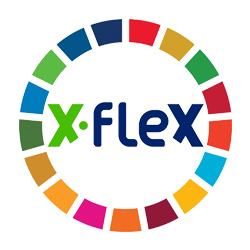
• SERVIFLEX tool (Integrated flexibility management tool): It is the tool for flexibility managers to take advantage of the value of energy storage along with other demand flexibility resources towards the establishment of a holistic framework for flexibility extraction, profiling, forecasting, classification, clustering and management to serve different market and grid needs.
• GRIDFLEX tool (Advanced tool for automatic control and observability): It is the tool for distribution grid and microgrid operators in order to prevent congestion and power quality problems with the increasing share of intermittent RES, giving special attention to the potential grid problems due to extreme climate events.
• MARKETFLEX tool (Market platform and new market mechanisms): It is the tool for flexibility owners to access the market through an aggregator or through a Balancing Responsible Party (BSP) to participate on different markets: the existing wholesale markets and balancing markets, but also local electricity markets and local flexibility markets for DSO.
• X-FLEX platform (Flexible and scalable integrated platform): The X-FLEX platform integrates all the X-FLEX solutions in order to provide services for all the energy actors and ensure more secure, stable and clean energy supply.
The expected results of the X-FLEX project include socio-economic benefits by the creation of jobs related to distributed flexibility technologies after the commercialization, deployment and implementation of the X-FLEX solutions. Environmentally, X-FLEX predicts the increase of RES production by shifting the demand toward high-generation periods thus avoiding curtailment of DRES. Besides, this project aims at a market transformation at the distribution level and a large-scale deployment of local markets.
In the panel, Mislav Kirac from Zelena Energetska Zadruga (ZEZ) will present REDREAM project, one of the “sister projects” on topic of flexibility and results from the Croatian pilot site.
PLENARY SPEAKER
Julius Georgiou
University of Cyprus, Department of Electrical and Computer Engineering
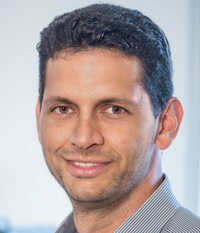
Title: Smart Systems for Improved Quality of Life
Abstract: Microelectronic revolutions come in waves that are driven by necessity. Currently, the aging population is creating a need for various kinds of electronic systems to improve their quality of life. These include the restoration of lost functionality via electronic implants, better health screening technology and non-invasive monitoring in the home environment. This talk presents work that has been done towards addressing these needs, whether it be through the development of new required building blocks or through the development of more complex systems that combine custom built hardware and software. In particular the talk covers work done towards developing a vestibular implant for balance restoration, a single chip low-power imager for a bionic eye, a cancer screening capsule for detecting early-stage carcinomas in the small intestine, a bio-inspired acoustic scene analysis system, the development of the ElectroUteroGraph, as well as the use of custom chips for the design of adaptive metamaterials.
CV: Julius Georgiou (IEEE M’98-SM’08) is an Associate Professor at the University of Cyprus. He received his M.Eng degree in Electrical and Electronic Engineering and Ph.D. degree from Imperial College London in 1998 and 2003 respectively. For two years he worked as Head of Micropower Design in a technology start-up company, Toumaz Technology. In 2004 he joined the Johns Hopkins University as a Postdoctoral Fellow, before becoming a faculty member at the University of Cyprus from 2005 to date. He is one of the co-founders of AJM Med-i-CAPs Ltd.
Prof. Georgiou is a member of the IEEE Circuits and Systems Society, is the Chair of the IEEE Biomedical and Life Science Circuits and Systems (BioCAS) Technical Committee, as well as a member of the IEEE Circuits and Systems Society Analog Signal Processing Technical Committee. He served as the General Chair of the 2010 IEEE Biomedical Circuits and Systems Conference and is the Action Chair of the EU COST Action ICT-1401 on “Memristors-Devices, Models, Circuits, Systems and Applications – MemoCIS”. Prof. Georgiou was an IEEE Circuits and Systems Society Distinguished Lecturer for 2016-2017. He also was an Associate Editor of the IEEE Transactions on Biomedical Circuits and Systems, an Associate Editor of the Frontiers in Neuromorphic Engineering Journal and a Guest Editor for the IEEE Journal on Emerging and Selected Topics in Circuits and Systems, for Programmable Metamaterials and also Circuits and Systems for Smart Agriculture. He is a recipient of a best paper award at the IEEE ISCAS 2011 International Symposium and at the IEEE BioDevices 2008 Conference. In 2016 he received ONE Award from the President of the Republic of Cyprus for his research accomplishments.
His research interests include Low-power analog and digital ASICs, adaptive metamaterials for medical applications, implantable biomedical devices, bioinspired electronic systems, electronics for space, brain-computer-interfaces (BCIs), electrouterography, circuits and systems for agriculture, memristive devices, inertial and optical sensors and related systems.
KEYNOTE SPEAKERS
Georges Kaddoum
École de technologie supérieure, Université du Québec
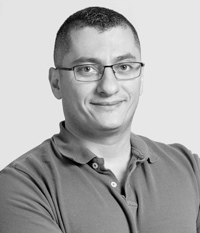
Title: IIoT-Empowering Smart Grid Networks: Potential Solutions and Challenges
Abstract: Complicated by climate change, overpopulation and increasing industrialization, energy sector has been calling for revolutionary changes. Inefficient nature of fossil fuels, emission of carbon dioxide (CO2) and greenhouse gases (GHGs) have stressed the need for incorporation of renewable resources. However, the newly proposed smart grid (SG) faces its own challenges, such as need for effective fault diagnostics, power output reliability and compatibility with electrical vehicles. Therefore, the key role of communication technologies to play in this new grid cannot be overstated. It will allow bidirectional flow of information between different parts of SG and the customer to facilitate distributed control and monitoring of various SG environments. Furthermore, with the advent of industrial internet of things (IIoT), a large number of low-power low-rate sensors are going to be deployed in a bandwidth-limited wide range system, which requires new communication techniques and strategies to serve their requirements and quality-of-service (QoS) and also handle the possibility of node failures and self-correction once a fault occurs. In this presentation we will introduce the SG communication environment and related communication systems, challenges, potential solutions, and future research directions.
CV: Georges Kaddoum is a Professor and Tier 2 Canada Research Chair with the École de technologie supérieure (ÉTS), Université du Québec, Montréal, Canada. In 2014, he was awarded the ÉTS Research Chair in physical-layer security for wireless networks. Prof Kaddoun has published over 300+ journals, conference papers, two chapters in books, and has eight pending patents. His recent research activities cover wireless communication networks, tactical communications, resource allocations, security. Dr. Kaddoum received the Best Papers Awards at the 2014 IEEE International Conference on Wireless and Mobile Computing, Networking, Communications (WIMOB), with three coauthors, and at the 2017 IEEE International Symposium on Personal Indoor and Mobile Radio Communications (PIMRC), with four coauthors. Moreover, he received IEEE Transactions on Communications Exemplary Reviewer Award for the year 2015, 2017, 2019. In addition, he received the research excellence award of the Université du Québec in the year 2018. In the year 2019, he received the research excellence award from ÉTS in recognition of his outstanding research outcomes. Prof. Kaddoum is currently serving as an area editor for the IEEE Transactions on Machine Learning in Communications and Networking and an Associate Editor for IEEE Transactions on Information Forensics and Security, IEEE Transactions on Communications, and IEEE Communications Letters.
Hrvoje Pandžić
University of Zagreb Faculty of Electrical Engineering and Computing
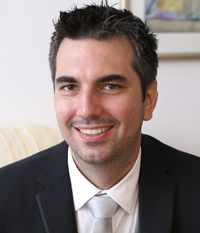
Title: Do we need distribution-level markets?
Abstract: Fast penetration of renewable energy sources and introduction of the distributed paradigm are some of the recent key trends in the power system structure. Hence, the distribution network faces challenges such as voltage deviation and bidirectional power flows. Although there are already existing market mechanisms to deal with network problems, they are primarily focused on the transmission level. Some argue that new circumstances require adequate new distribution-level markets, whereas others claim that such markets would be difficult to integrate into the existing structure and that they might cause more problems than they would solve. This talk discusses and elaborates on the necessity of the distribution-level markets.
CV: Hrvoje Pandžić received his PhD from the University of Zagreb Faculty of Electrical Engineering and Computing (UNIZG-FER) in 2011. After graduation, he was a Post-doctoral Researcher at the University of Washington, Seattle, WA, 2012-2014. Currently, he is a Professor and the Head of the Department of Energy and Power Systems at UNIZG-FER. He is also the Head of the Demand Response Laboratory at UNIZG-FER and the Principle Investigator in a number of international and national research projects. He published over 50 papers in Q1 journals by the JCR rankings. He received many awards for his work, such as the award Science by the Government of the Republic of Croatia, 2018, Award for the highest scientific and artistic achievements in Croatia by the Croatian Academy of Science and Arts, 2018, Award Vera Johanides by the Croatian Academy of Engineering, 2015. He is an Associate Member of the Croatian Academy of Science and Arts and an Editor for IEEE Transactions on Power Systems.
INVITED LECTURER
Boris Dumnić
University of Novi Sad, Faculty of Technical Sciences, Department for Power, Electronics and Telecommunications Engineering, Novi Sad, Serbia
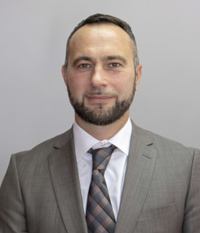
Title: An innovative approach to a more sustainable and reliable energy society demonstrated by Renewable Energy Sources for smart sustainable health Centers, University Education and other public buildings
Abstract: By reviewing current criteria of a modern society it is not hard to demonstrate that most of the qualifiers and quantifiers revolve around energy related trivia. It is hard to imagine a future for the humanity where significant efforts were not made to tackle the two most important questions: sustainability of energy supply and reliability of energy supply (with the opportune issue being energy independence). These issues will be highly influenced by the current state of the related technologies that has been developing swiftly. Predominantly, this relates to the energy generation technologies, however inherent benefits can be reaped from mutual co-benefits of other contemporary technologies such as energy storage, electrified transportation and others. The key to successful harnessing of the available potential lies within the inclusive and innovative approach to utilization of renewable energy sources in high energy demand public and private sectors, aggregated by comprehensive energy management solution that additionally assumes stationary energy storage and electrified transportation devices as intermittent storage. The innovative approach in creating a smart and sustainable energy society of the future will be demonstrated through key results of the Renewable Energy Sources for smart sustainable health Centers, University Education and other public buildings (RESCUE) project, with the most important component being transfer-ability and expansion of the results. Assuming the initial impulse from the regionally established knowledge transfer basis, the foundation for the climate-smart, emission-neutral sustainable energy society of the future has been laid. The key findings of the RESCUE projects can easily be applied to other public buildings, but in the wake of another energy crisis the benefits can also be acquired by private enterprises and SME’s looking to downsize daily operational costs. Renewable energy generation and other associated technologies (storage, EV’s etc.) present everyone with the opportunity for the paradigm shift (a change in perspective) and the development of novel climate friendly business models that can generate revenue in the same manner (if not better) as classical (fossil based) emission heavy solutions.
CV: Dr Boris Dumnić is with the University of Novi Sad, Faculty of Technical Sciences, Department for Power, Electronics and Telecommunications Engineering, Novi Sad, Serbia since 2004. He received Ph.D. degree in electrical engineering from the University of Novi Sad, Serbia, in 2013 and was promoted to the rank of Assistant Professor in 2013 and to the rank of Associate Professor in 2018. From 2010 until 2018, he was the director of the faculty Centre – Centre for Renewable Energy Sources and Power Quality – CRESPQ. He is appointed for director of Department for Power, Electronics and Telecommunications Engineering on 2015 and from 2018 he is Head of Chair for power electronics and converters. Currently he is vice-Dean for development and finances of Faculty.
The focus of his current research is on renewable energy systems, distributed energy resources, integration of DER in active distribution system, power electronics, e-mobility and electrical machines and drives. He published numerous of scientific papers/articles in international and national scientific events including significant number in top ranked international peer-reviewed journals. His research group is coordinating IPA CBC RESCUE project – “Renewable Energy Sources for smart sustainable health Centers, University Education and other public buildings” and was involved in IPA HUSRB REVLAB – “Renewable energy virtual laboratory”, TEMPUS “Cost Effective & Environmentally Friendly Energy Systems” and numerous other R&D and industrial projects funded by the EU, National projects funded by the Serbian Government and Provincial Vojvodina Secretariats.
He is IEEE Member and chair of IEEE Serbia and Montenegro Section.
PAPER SUBMISSION AND PUBLICATION
All papers submitted to the conference must not have been published, submitted or accepted for publication elsewhere. IEEE policy regarding plagiarism and duplicate submission/publication will be strictly enforced. All papers will be judged on the basis of their clarity, relevance, originality, and contribution. Manuscripts will be limited to 6 (IEEE style) pages, up to 8 pages with additional costs. Papers should be submitted electronically via the on-line submission system. Paper submission should follow the IEEE double-column format for conferences (templates will be available via the conference web site). Submitted papers will undergo a peer review process coordinated by the Program Committee. All submissions must be in English. Authors of accepted papers are required to register for the conference and attend the conference in order to have the paper included in the SST 2022 Proceedings and submitted for posting to the IEEE Xplore database and other indexing databases.IEEE members will get a discount rate of 10% on the conference registration fee. Selected papers presented at the Conference will be invited for possible journal publication (International Journal of Electrical and Computer Engineering Systems) in expanded form and after a new round of review.
Paper Templates
Microsoft Word 2003
- A4 (DOC, 56 KB)
LaTeX Archive Contents (PDF, 63 KB)
- Windows (ZIP, 700KB)
LateX Bibliography Files
- Windows (ZIP, 309 KB)
For more details, please visit http://www.ieee.org/conferences_events/conferences/publishing/templates.html .
Paper Submission
PLEASE FOLLOW THE GUIDLINES GIVEN BELOW WHEN SUBMITTING THE FINAL VERSION OF THE PAPER
To ensure the accepted papers will be included in the conference proceedings and IEEE Xplore, the camera-ready versions of the papers and all additional documents (the IEEE Copyright and Consent Form and Responses to Reviewers Comments) must be uploaded to EasyChair by July 20, 2022, as described in Step 6.
However, there are few steps that must be taken before final submission:
Step 1. Make sure that your paper adheres to the IEEE standard and it follows the IEEE conference template,
Step 2. The paper is revised taking into account the suggestions made by the reviewers. If you got comments regarding the English language please have your paper proof read by a native English speaker, or seek online services to improve the language of your paper.
Step 3. The paper must be unpublished and must not be submitted or under review for publication elsewhere. IEEE policy regarding plagiarism and duplicate submission/publication will be strictly enforced. Furthermore, make sure that your paper is substantially different from (your) previously published work. This can be checked using eg. Ephorus (http://www.ephorus.com/).
Step 4. Proofread your source document thoroughly to confirm that it will require no revision.
Step 5. Add the copyright notice at the bottom of the first page of your source document.
- For papers in which all authors are employed by the US government, the copyright notice is: S. Government work not protected by U.S. copyright
- For papers in which all authors are employed by a Crown government (UK, Canada, and Australia), the copyright notice is: 978-1-6654-8215-8/22/$31.00 ©2022 Crown
- For papers in which all authors are employed by the European Union, the copyright notice is: 978-1-6654-8215-8/22/$31.00©2022 European Union
- For all other papers the copyright notice is: 978-1-6654-8215-8/22/$31.00 ©2022 IEEE
Step 6. Upload your final paper and supplementary files to EasyChair
The following files should be generated before submitting to EasyChair.
- The camera-ready version of the paper in DOC(x) or TEX format (including figures) and in PDF format checked using IEEE PDF eXpress, please see below “CREATING YOUR PDF EXPRESS ACCOUNT”
- Responses to reviewers comments (PDF or DOC(x)), please see below “RESPONSES TO REVIEWERS’ COMMENTS”
- Add all the files to one zip archive and upload through EasyChair
In order to upload your final paper and supplementary files log into the SST2022 EasyChair submission page at https://easychair.org/conferences/?conf=sst2022
CREATING YOUR PDF EXPRESS ACCOUNT
Log in to the IEEE PDF eXpress site
First-time users should do the following:
- Select the New Users – Click Here link.
- Enter the following:
- 55530X for the Conference ID
- your email address
- a password
- Continue to enter information as prompted.
An Online confirmation will be displayed and an email confirmation will be sent verifying your account setup.
Previous users of PDF eXpress or IEEE PDF eXpress Plus need to follow the above steps, but should enter the same password that was used for previous conferences. Verify that your contact information is valid.
Contacting PDF eXpress Support
Access the Publications Support Center for IEEE PDF eXpress. If you do not find an answer in the Find Answers tab, go to the Ask A Question tab. Your question will be forwarded to IEEE PDF Support and answered within 3 business days.
IMPORTANT: Any changes made to a PDF after IEEE PDF eXpress Plus conversion or PDF checking may invalidate Xplore compatibility. This includes headers, page numbers, copyright notice, watermarks, etc. If any of these elements are desired, they should be added to the document before a PDF is created.
IEEE COPYRIGHT AND CONSENT FORM
The IEEE Electronic Copyright Form (eCF) must be completed and digitally signed for your paper (one form per paper, not per author). Upon acceptance of your paper, the corresponding author of the paper will receive an email with detailed instructions on how to sign the electronic copyright agreement through EasyChair. Please note that if the electronic copyright agreement is not signed, the paper will not be published in the proceedings or IEEE Xplore.
RESPONSES TO REVIEWERS’ COMMENTS
Create a file containing responses to reviewers’ comments (PDF or DOC(x)). The file should contain all reviewers’ comments with a response below each comment.
NOTICE:
NO PAPER WILL BE PUBLISHED WITHOUT THE AUTHOR’S COMPLETED REGISTRATION AND PAYMENT. More information about registration and payment is available here: https://sst-conference.org/index.php/registration-2022/. Furthermore, kindly notice that at least one author should present the paper at SST 2022 conference.
SPONSORS, DONORS AND SUPPORT
ORGANIZING SPONSOR
Organized and sponsored by the Faculty of Electrical Engineering, Computer Science and Information Technology Osijek,
J. J. Strossmayer University of Osijek


